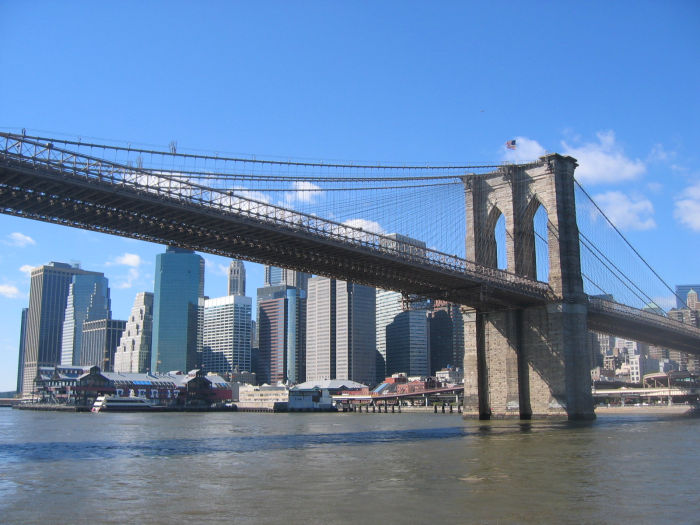
An iconic landmark, the Brooklyn Bridge is one of the oldest suspension bridges in America.
New York City's Brooklyn Bridge stands as a testament to hard work and world class engineering. An iconic landmark and historical site, it is one of the oldest suspension bridges in the United States. At the time it opened in 1883, it was the longest suspension bridge in the world — 50 percent longer than any previously built.
Building the bridge required the use of specially designed workspaces that could be submerged below New York's East River. Workers would need to excavate tons of mud and sediment in order to reach solid bedrock capable of supporting the bridge's two support towers.
As a New York City historical website explains, 3,000-ton pneumatic caissons were used for this submarine and subterranean excavation. The caissons were "large, airtight cylinders in which workers cleared away layers of silt in an atmosphere of compressed air underneath the riverbed." The caissons were deployed 78 feet below the river on the Manhattan side, and 44 feet below the river on the Brooklyn side. To expedite the descent of the caissons, dynamite was used for the first time in bridge construction. The foundations took three years to construct.
Life inside these caissons was extremely difficult, one of the first man-made instances of compressed air:
Inside the caisson everything wore an unreal, weird appearance. There was a confused sensation in the head, like "the rush of many waters." The pulse was at first accelerated, then sometimes fell below the normal rate. The voice sounded faint unnatural, and it became a great effort to speak. What with the flaming lights, the deep shadows, the confusing noise of hammers, drills and chains, the half-naked forms flitting about, if of a poetic temperament, get a realizing sense of Dante's inferno. One thing to me was noticeable – time passed quickly in the caisson.
The Brooklyn Bridge is still in every day use today. Read more about its construction.
